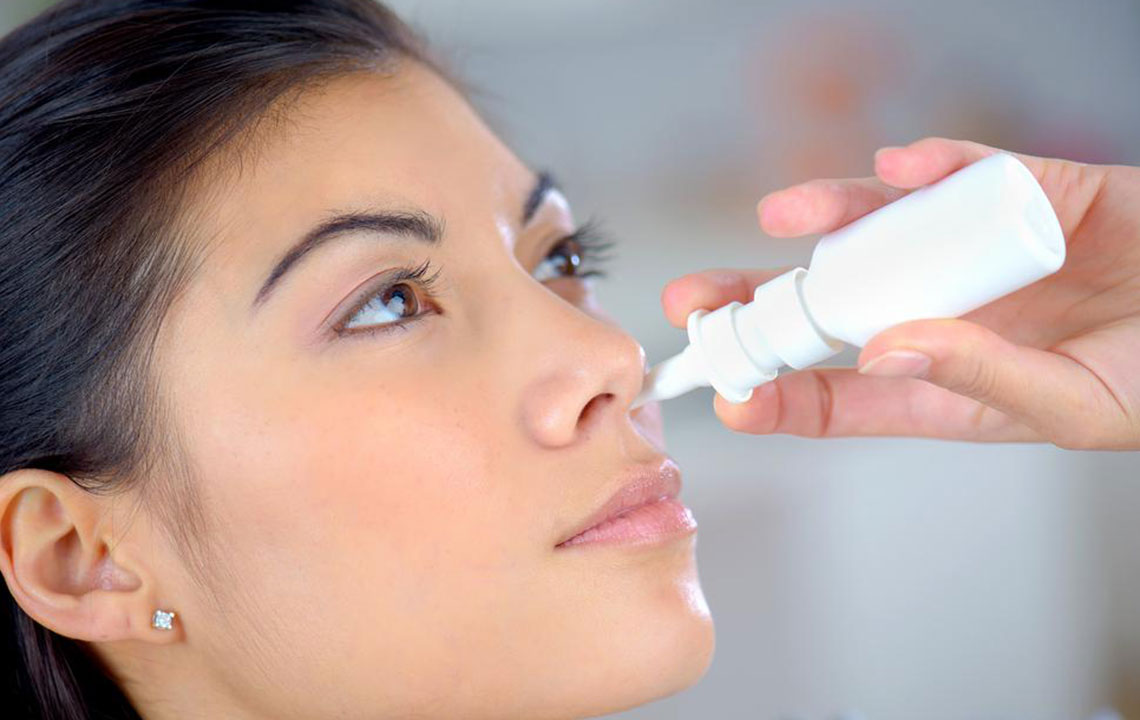Comprehensive Guide to Choosing the Best Nasal Spray for Dust Allergy Relief
This comprehensive guide offers detailed insights into choosing the best nasal spray for dust allergy relief. It covers types of nasal sprays, their usage, efficacy, and safety tips, helping allergy sufferers find effective relief from symptoms like congestion, sneezing, and itching. Understanding the differences between prescription and OTC options empowers users to select the right product based on their specific needs. Managing dust mite allergies effectively reduces discomfort and improves quality of life, especially during peak allergy seasons or in homes with high dust mite populations.

How to Select the Right Nasal Spray for Dust Mite Allergy Symptoms
Dust allergies are a common issue affecting millions worldwide, and children are particularly vulnerable to dust mite allergies. These microscopic creatures, dust mites, are invisible to the naked eye but thrive in environments that are warm, humid, and dark. They tend to reside in indoor areas such as mattresses, pillows, carpets, upholstered furniture, and bedding. Since dust mites are present all year round, their numbers tend to increase during periods of high humidity, particularly in late summer and during humid spring months. With their ability to reproduce rapidly in such environments, managing dust mite allergy symptoms becomes critical for those affected.
Understanding the habitats of dust mites and how they impact allergy sufferers is the first step toward effective relief. These creatures feed on accumulated pet dander, shed skin, and other organic debris, which can exacerbate allergy symptoms. Homes with poor ventilation and high moisture levels create ideal breeding grounds for dust mites, especially in bedrooms where people spend a significant amount of time. Therefore, control of indoor humidity, regular cleaning, and using allergen-proof bedding are essential steps in reducing dust mite populations and subsequent allergy attacks.
Identifying Dust Mite Allergy Symptoms
Allergic reactions to dust mites are quite widespread and can manifest in various ways. In some individuals, symptoms are more pronounced, leading to discomfort and impacting quality of life. Common symptoms include itchy and watery eyes, nasal congestion, sneezing fits, postnasal drip, cough, eczema flare-ups, and breathing difficulties. These symptoms often worsen during the early mornings and at night when lying in bed, due to close proximity to accumulated dust mites. Recognizing these symptoms early can help in implementing appropriate treatment strategies and avoiding unnecessary suffering.
Moreover, individuals with pre-existing respiratory conditions like asthma may notice their symptoms worsening when exposed to dust mites. As a result, managing dust mite allergies is not only about symptom relief but also about preventing exacerbations of underlying respiratory issues.
When it comes to treatment options, various medications are available both over-the-counter (OTC) and by prescription. Among these, nasal sprays are an effective and popular choice for managing localized nasal allergy symptoms, such as congestion, runny nose, and sneezing. The decision between prescription and OTC nasal sprays depends on the severity of symptoms, duration, and individual health considerations.
Prescription Nasal Sprays for Dust Allergy Relief
Prescription nasal sprays are generally recommended for individuals with persistent or severe allergy symptoms. These sprays contain corticosteroids, which help reduce inflammation of the nasal passages and alleviate itching, congestion, and sneezing. Commonly prescribed options include Beconase (budesonide), Nasonex (mometasone), and Flonase (fluticasone). When used regularly, these corticosteroid sprays can significantly diminish allergic inflammation and improve quality of life. It is essential to follow the dosage instructions carefully and consult with a healthcare provider if symptoms persist or worsen.
Antihistamine Nasal Sprays
Antihistamine-based nasal sprays like Azelastine (Astelin) are designed to block histamines—chemicals released by the immune system during allergic reactions. By inhibiting histamine activity, these sprays can effectively reduce nasal congestion, sneezing, and itching. They are suitable for people who experience frequent allergic reactions and require quick relief. Azelastine nasal spray can also be used in combination with other allergy medications for more comprehensive control of symptoms.
Over-the-Counter Nasal Sprays
Cromolyn sodium nasal sprays are available freely at pharmacies without a prescription. These work by preventing allergic reactions before they start, making them particularly useful for individuals with known dust allergies. When used consistently before allergen exposure, cromolyn can significantly diminish the severity and frequency of symptoms. For those experiencing mild symptoms, OTC options provide a convenient, safe, and cost-effective method of relief.
Decongestant Nasal Sprays for Immediate Relief
Decongestant sprays like Afrin, Dristan, and similar products offer quick relief from nasal congestion by constricting blood vessels in the nasal passages. They are particularly helpful during acute episodes of severe congestion, enabling easier breathing and better sleep. However, it’s important to use these products cautiously, limiting usage to no more than three consecutive days to prevent rebound congestion, a condition known as rhinitis medicamentosa. Long-term use of decongestant sprays is discouraged due to potential side effects.
Saline Nasal Sprays: Natural and Safe Relief
Saline nasal sprays contain a simple saltwater solution that helps moisturize dry and irritated nasal passages. They assist in softening mucus and clearing nasal congestion naturally, with no risk of side effects. Regular use of saline sprays is recommended for individuals with dry or sensitive noses, or those recovering from nasal infections or sinus issues. They can be used multiple times a day and are particularly beneficial for maintaining nasal hygiene and comfort.
Proper application techniques are crucial for maximizing efficacy and ensuring safety when using nasal sprays. Always follow these guidelines:
Blow your nose gently to clear nasal passages before application.
Hold the spray bottle upright and close one nostril with your finger.
Insert the nozzle into the open nostril, aiming slightly away from the nasal septum.
Squeeze the spray while breathing in gently through the nose.
Repeat in the other nostril if necessary.
Matching the Right Nasal Spray to Your Symptoms
Different nasal sprays address specific symptoms. If your primary concern is sneezing, an antihistamine spray is advisable. For nasal congestion and blockage, decongestant sprays offer rapid relief but should be used cautiously. Combining antihistamines with decongestants can provide comprehensive symptom control, but avoid extended use to prevent rebound effects. It is best to consult with a healthcare professional if your symptoms are severe, persistent, or associated with conditions like asthma, to ensure you get an appropriate treatment plan tailored to your needs.





